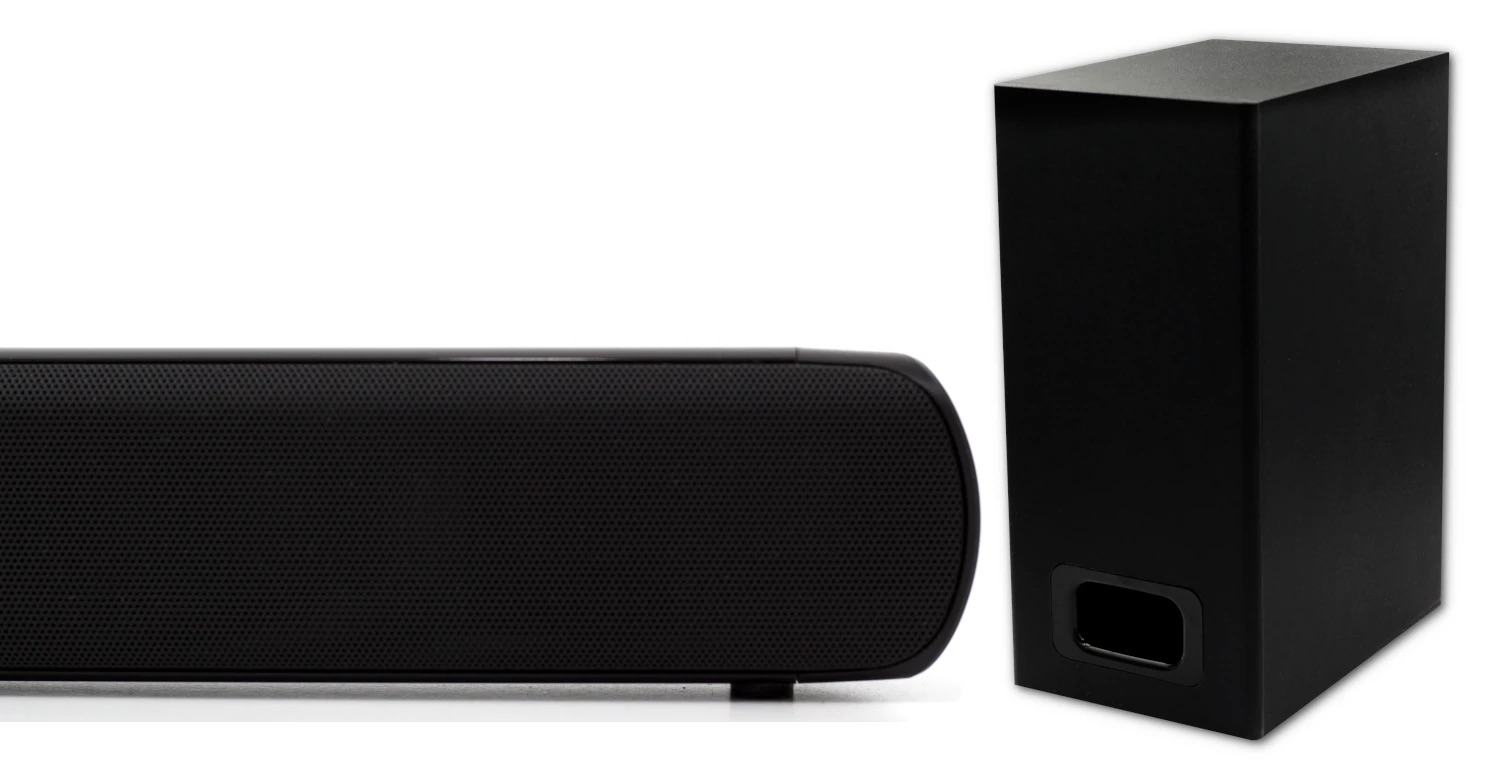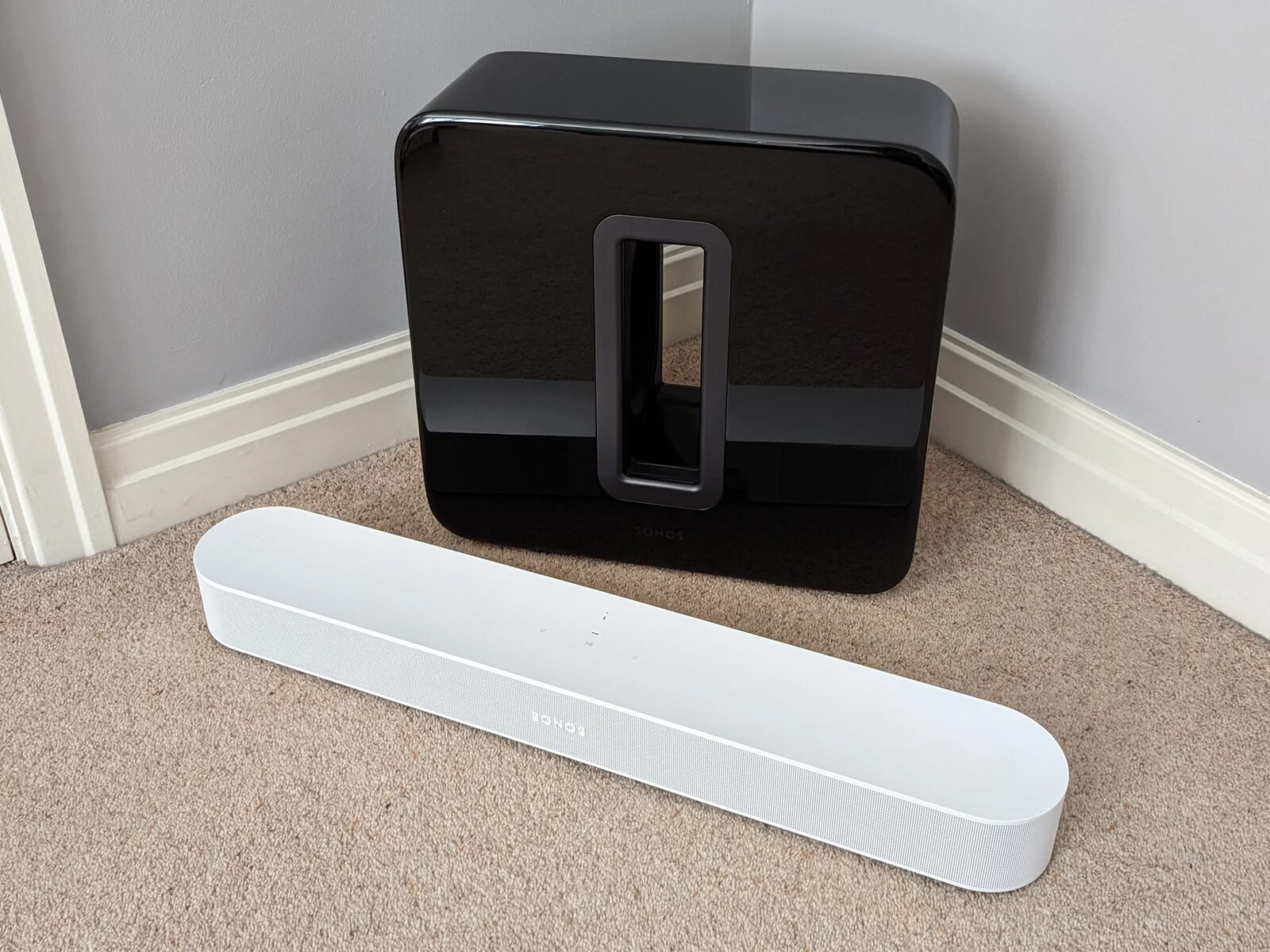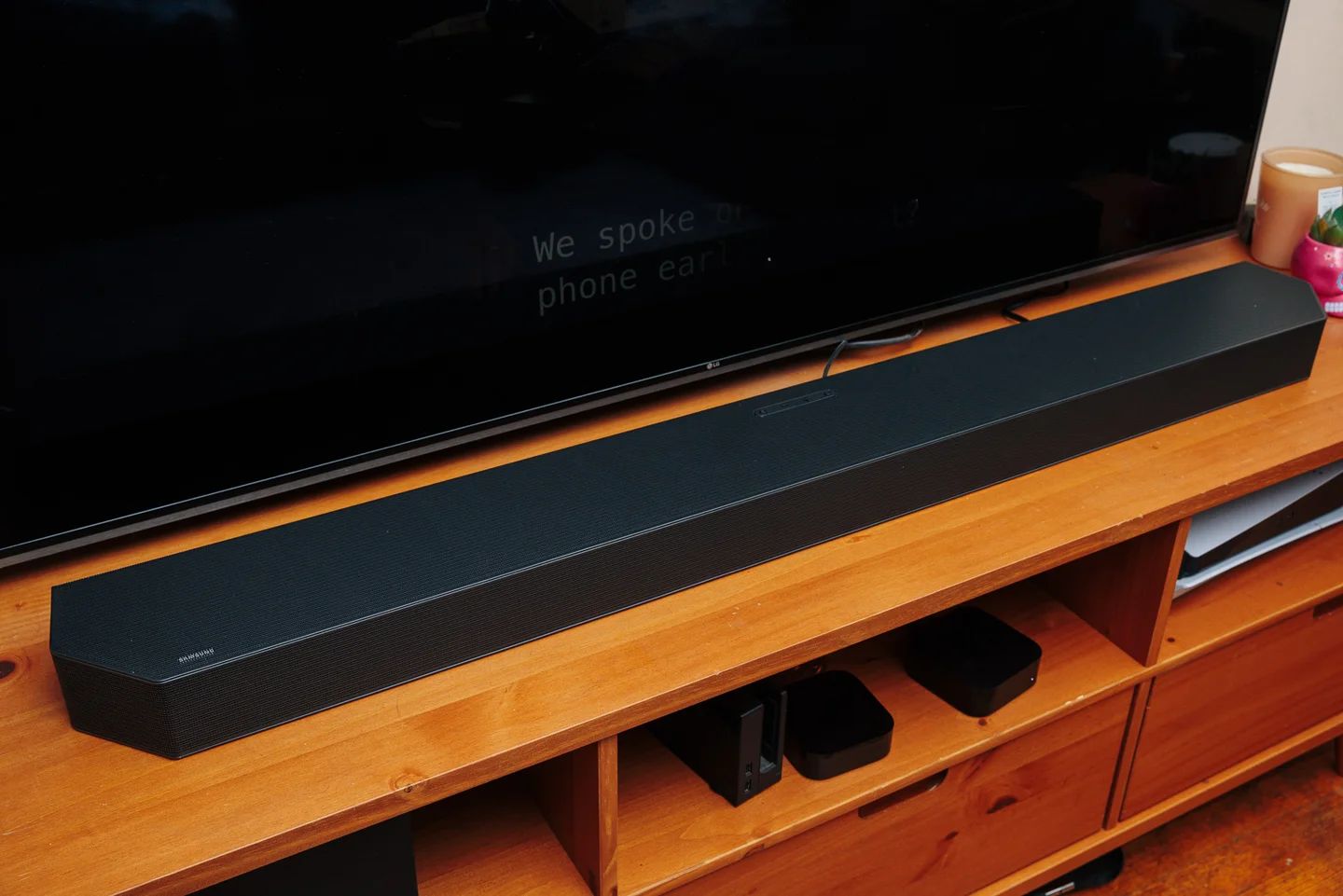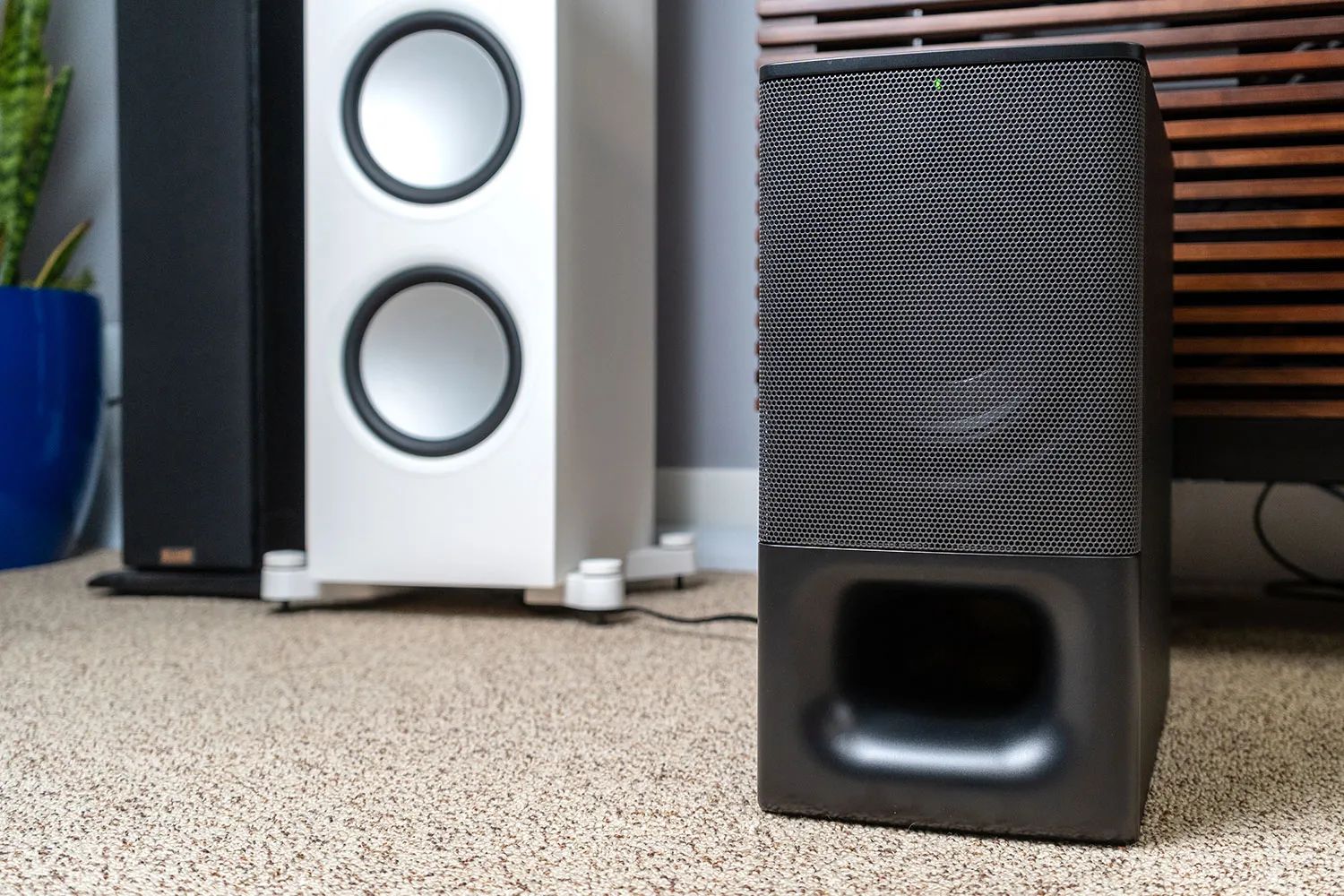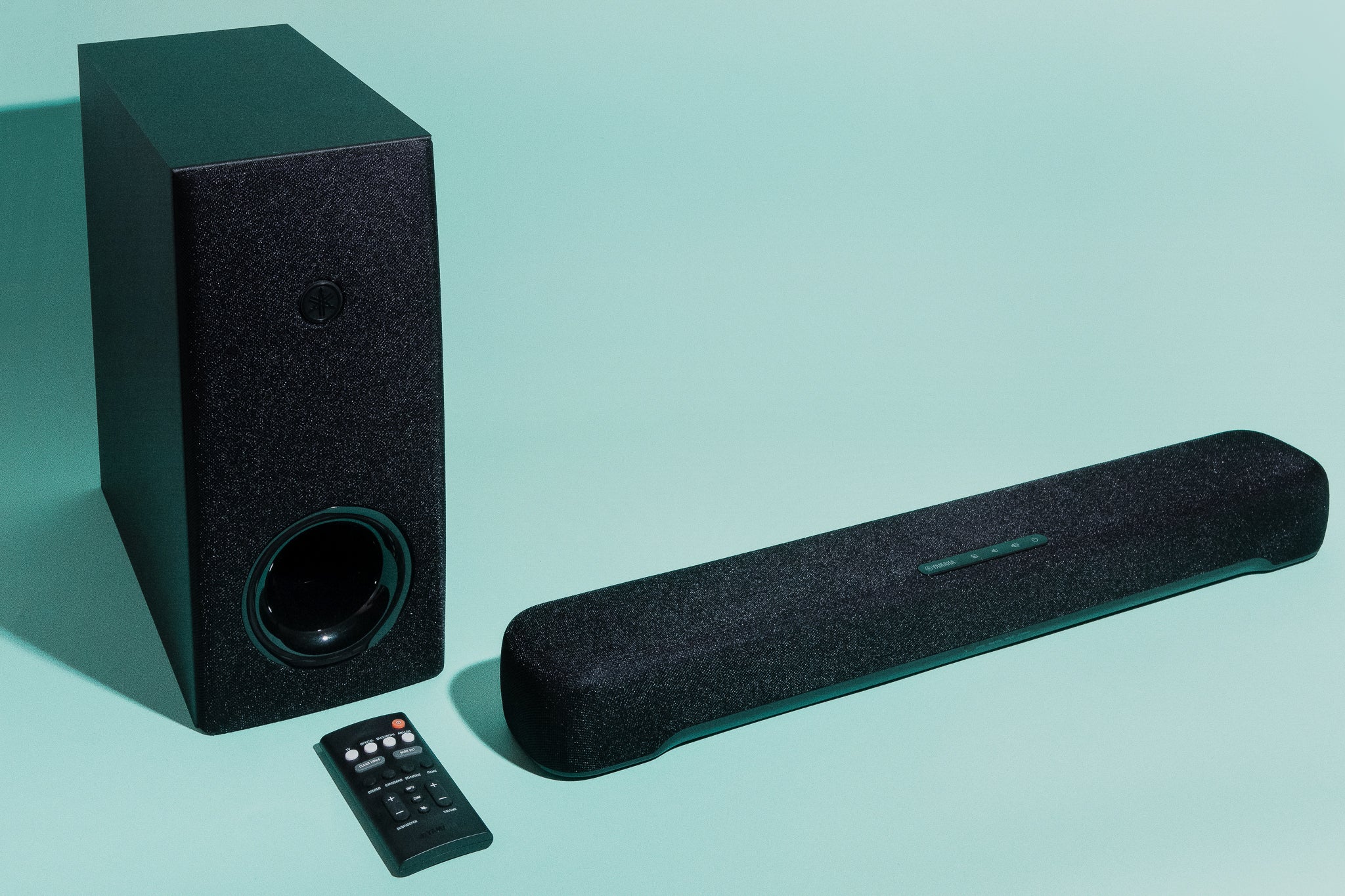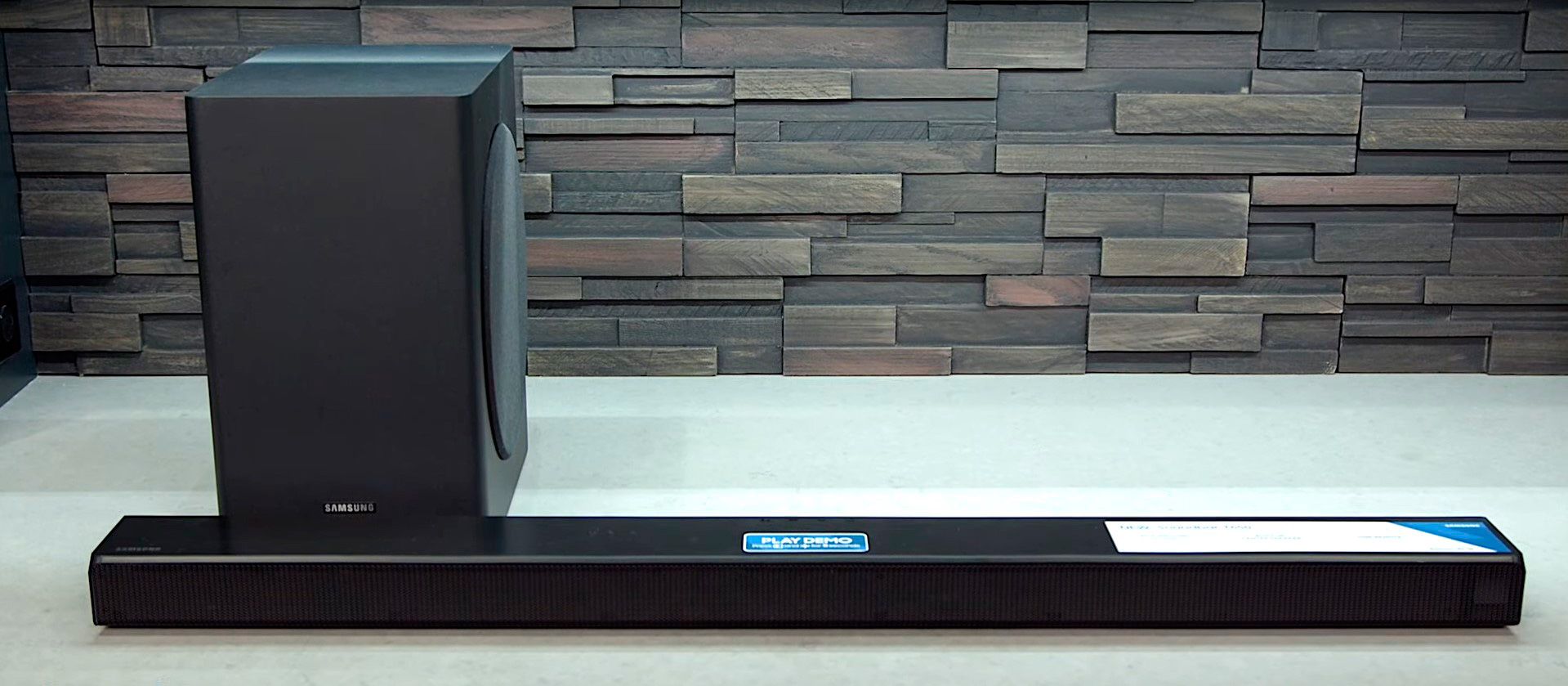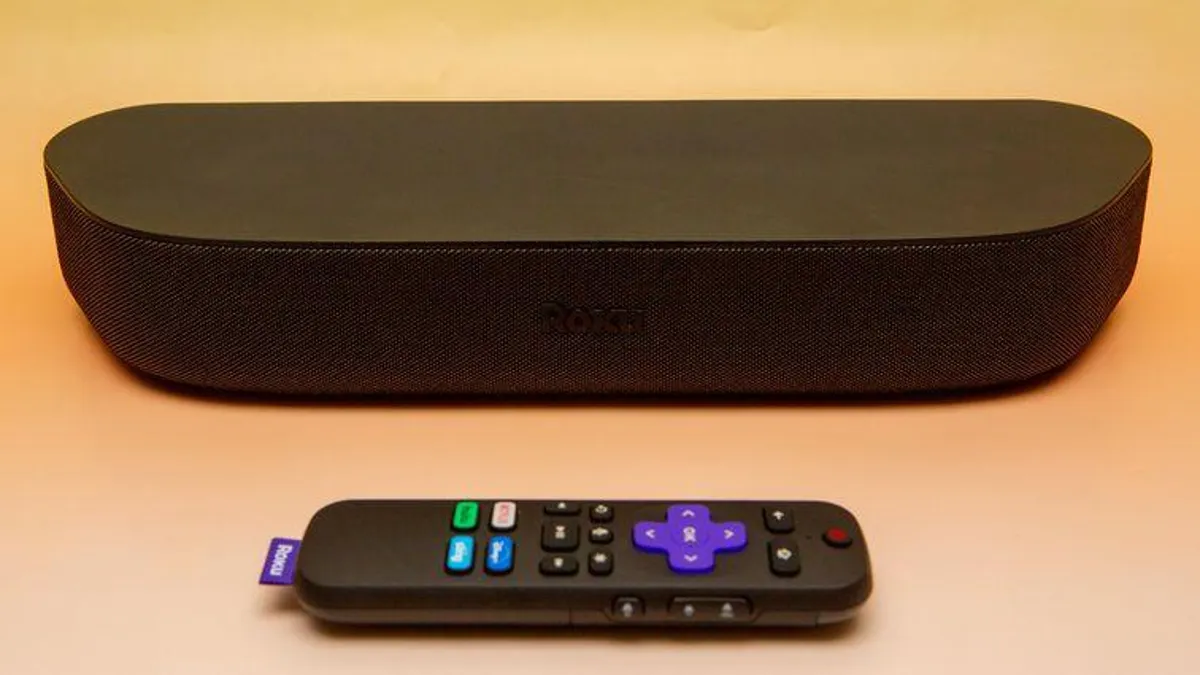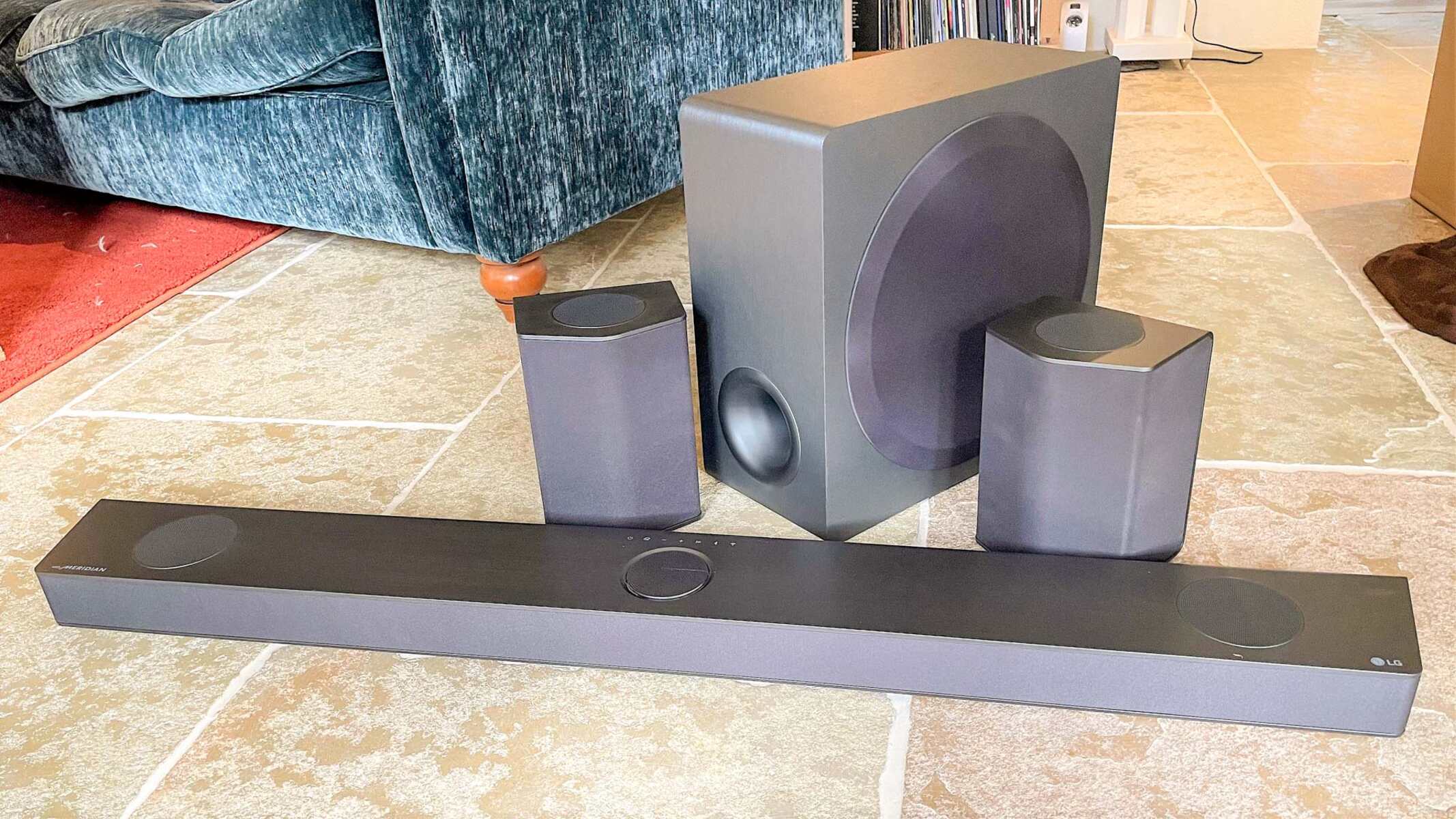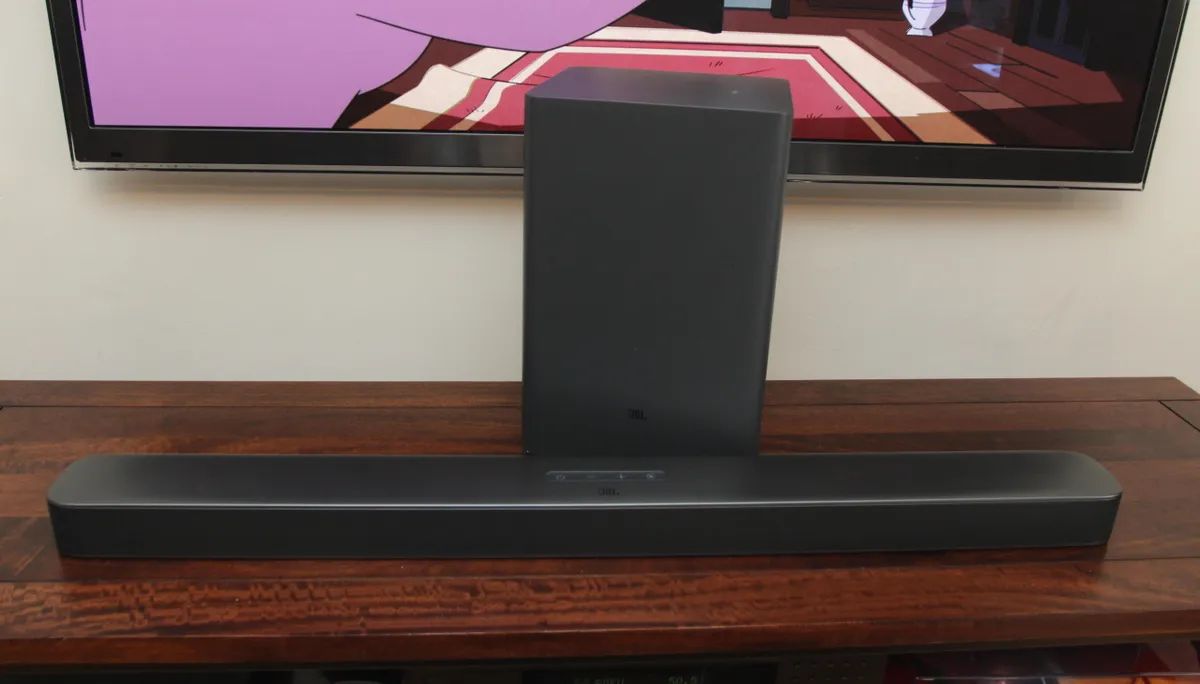Introduction
Welcome to the world of home audio, where soundbars and subwoofers work together to create an immersive audio experience. You may have heard of soundbars and subwoofers, but do you ever wonder what exactly they do and how they complement each other?
A soundbar is a sleek, elongated speaker that is designed to enhance the audio quality of your TV or home entertainment system. It aims to reproduce higher frequency sounds such as dialogues, background music, and sound effects with clarity and depth. However, when it comes to delivering deep bass and low-frequency rumbles, a soundbar alone often falls short.
This is where a subwoofer comes into play. A subwoofer is a specialized speaker that focuses on reproducing low-frequency sounds, particularly deep bass. It adds a rich and powerful element to your audio setup, providing a more well-rounded and immersive sound experience.
Together, a soundbar and a subwoofer create a harmonious partnership, with each component bringing its unique strengths to the table. In this article, we will explore the role of a subwoofer in complementing a soundbar and enhancing your audio experience.
Definition and Function of a Soundbar
A soundbar is a slim, elongated speaker system that is designed to enhance the audio quality of your TV or home theater setup. It consists of multiple built-in speakers arranged in a single unit, delivering a wide sound dispersion to create a surround sound effect. Despite its compact size, a soundbar is capable of producing clear audio, making it an ideal choice for those seeking an improved TV audio experience.
The primary function of a soundbar is to enhance the sound quality of your TV. By utilizing advanced audio technologies and multiple speakers, a soundbar can reproduce higher frequency sounds with much greater clarity, resulting in improved dialogues, music, and sound effects. Additionally, some soundbars come with built-in virtual surround sound capabilities, creating a more immersive audio experience even without a dedicated surround sound system.
Soundbars are typically connected to your TV either through a wired connection or wirelessly using Bluetooth or Wi-Fi. This allows for convenient installation and easy integration into your existing entertainment setup. Some soundbars also come with HDMI inputs and outputs, enabling seamless connectivity with other devices, such as gaming consoles, streaming devices, and Blu-ray players.
In addition to enhancing audio output, soundbars are designed with aesthetics in mind. With their sleek and minimalist designs, they can seamlessly blend into any living space, whether mounted on a wall or placed on a TV stand. This makes them a popular choice for individuals who prioritize both audio performance and aesthetic appeal.
In summary, a soundbar is a compact and versatile audio solution that improves the sound quality of your TV. Its primary function is to reproduce higher frequency sounds with clarity, providing an enhanced audio experience. With their sleek designs and easy installation, soundbars have become a popular choice for individuals looking to improve their home entertainment setup.
Definition and Function of a Subwoofer
A subwoofer is a specialized speaker designed to reproduce low-frequency sounds, particularly deep bass. While a soundbar focuses on delivering higher frequency sounds, a subwoofer adds depth and richness to the audio by handling the lower frequency range that a soundbar typically cannot achieve with the same impact.
Subwoofers utilize large drivers and a dedicated amplifier to accurately reproduce low-frequency sounds. These drivers are designed to move a lot of air, creating the intense bass response that is felt as much as it is heard. By producing these low-end frequencies, subwoofers contribute to a more balanced and immersive audio experience.
The primary function of a subwoofer is to enhance the bass response of your audio system. It adds depth and impact to music, movies, and other forms of entertainment by reproducing low-frequency effects such as explosions, thunder, and rumbling sounds. This not only adds a visceral element to your audio but also provides a more accurate representation of the original sound design.
Subwoofers are often placed on the floor or in a corner of the room to take advantage of room acoustics. The low-frequency sounds produced by subwoofers interact with the room and create a more dynamic and immersive audio experience. This setup helps to fill the room with rich, deep bass, giving you a more powerful and enveloping soundstage.
Furthermore, subwoofers can alleviate the strain on a soundbar. By offloading the low-frequency sounds to the subwoofer, the soundbar’s speakers can focus on reproducing mid and high-range frequencies more effectively. This not only improves the overall audio balance but also reduces distortion and improves the longevity of the soundbar’s speakers.
In summary, a subwoofer is a specialized speaker that adds depth and impact to your audio setup by reproducing low-frequency sounds. Its primary function is to enhance the bass response, creating a more immersive and balanced audio experience. By offloading low-frequency duties, a subwoofer also helps to reduce strain on a soundbar and improve overall audio quality.
Enhanced Bass Response
One of the key benefits of adding a subwoofer to your soundbar setup is the enhanced bass response it provides. While soundbars are capable of delivering a wide range of audio frequencies, they often struggle to reproduce deep bass tones with the same impact as a dedicated subwoofer.
A subwoofer is designed specifically to handle low-frequency sounds, particularly deep bass. With large drivers and a dedicated amplifier, it can produce the low-end frequencies that create a more immersive and realistic audio experience. By adding a subwoofer to your soundbar setup, you can enjoy the full range of bass frequencies, from subtle rumblings to powerful explosions, with greater detail and impact.
Enhanced bass response not only brings added excitement to movies and music, but it also provides a more accurate representation of the original sound design. You’ll be able to feel the deep thuds and pulsating beats, making the audio experience more captivating and engaging.
In addition to enhancing the impact and depth of bass, a subwoofer can also improve the overall balance of your audio. By offloading the low-frequency sounds to the subwoofer, the main soundbar speakers can focus on reproducing mid and high-range frequencies more effectively. This results in clearer and more detailed audio across the entire frequency spectrum.
Furthermore, the enhanced bass response provided by a subwoofer adds a greater sense of realism to your audio. Whether you’re watching an action-packed movie or listening to your favorite music, the deep, resonant bass makes the experience more immersive. It adds a layer of depth and dimension to the soundstage, making you feel like you’re right in the middle of the action.
Overall, adding a subwoofer to your soundbar setup brings enhanced bass response that adds impact, realism, and depth to your audio. It allows you to experience the full range of bass frequencies, from subtle nuances to powerful lows. The result is a more immersive and balanced audio experience that truly elevates your home entertainment.
Immersive Sound Experience
When it comes to creating an immersive audio experience, a soundbar alone may not be sufficient. This is where a subwoofer plays a crucial role in enhancing the overall soundstage, making your listening experience more captivating and lifelike.
A subwoofer adds depth and dimension to your audio by reproducing low frequencies accurately. It fills the room with powerful, resonating bass, creating a more immersive and enveloping sound environment. Whether you’re watching a thrilling movie, playing immersive video games, or enjoying a music concert, the addition of a subwoofer helps to recreate the sensation of being there in person.
By providing a solid foundation of deep bass, a subwoofer enhances the overall spatial awareness in your audio setup. It adds a sense of realism and presence, allowing you to feel the rumble of explosions, the thumping of drums, and the subtle vibrations of bass-heavy sound effects. This creates a more engaging and immersive sound experience that draws you deeper into the content you’re enjoying.
In movies, a subwoofer brings action sequences to life by reproducing low-frequency effects such as booming explosions and rumbling earth-shattering moments. It adds weight and impact to the sound, transporting you into the heart of the on-screen action. Similarly, when listening to music, a subwoofer enhances the low-end frequencies of instruments like the bass guitar or kick drum, adding richness and depth to the sound.
Furthermore, a subwoofer helps to create a more balanced and natural soundstage. It fills in the lower frequencies that can often be lacking in a soundbar setup, resulting in a more well-rounded audio experience. This ensures that all elements of the audio, from dialogue to background music to sound effects, are delivered with clarity, precision, and accuracy.
By combining the precise, detailed sound reproduction of a soundbar with the deep, immersive bass response of a subwoofer, you can achieve a truly captivating audio experience. The seamless integration of these two components creates a dynamic and compelling soundstage that allows you to fully immerse yourself in your favorite entertainment.
In summary, a subwoofer is essential for creating an immersive sound experience. By reproducing low frequencies with accuracy and power, it adds depth, dimension, and realism to your audio setup. Whether you’re watching movies, playing games, or listening to music, the addition of a subwoofer enhances the overall audio immersion and brings your content to life in a way that a soundbar alone cannot achieve.
Better Audio Balance
One of the key advantages of incorporating a subwoofer into your soundbar setup is achieving better audio balance. While soundbars are designed to reproduce a wide range of audio frequencies, they can struggle to deliver powerful and impactful low frequencies on their own.
A subwoofer handles the low-frequency sounds, particularly the deep bass, that a soundbar may not be able to reproduce with the same level of detail and impact. By adding a subwoofer to your setup, you can ensure that the bass frequencies are properly covered, resulting in a more balanced audio experience.
Having a dedicated subwoofer allows the soundbar’s speakers to focus on handling mid-range and high-frequency sounds more effectively. By offloading the low-frequency duties to the subwoofer, the soundbar can produce clearer and more detailed mid and high-range frequencies. This leads to improved audio clarity and accuracy across the entire frequency spectrum, resulting in a more balanced soundstage.
Furthermore, by achieving better audio balance, a subwoofer can also help to reduce distortion. When a soundbar is pushed to its limits to reproduce low-end frequencies, it may introduce unwanted distortions and vibrations. By supplementing the soundbar’s performance with a subwoofer, you can prevent these distortions and enjoy cleaner, more accurate audio reproduction.
With a subwoofer, you can also fine-tune the audio balance to suit your preferences. Many subwoofers come equipped with adjustable settings, such as volume controls and crossover frequency adjustments. This allows you to customize the bass response according to the acoustics of your room and your personal preferences, ensuring optimal audio balance for your specific setup.
Having a balanced audio output not only enhances your overall listening experience but also brings out the full potential of your favorite movies, music, and other forms of entertainment. Dialogues become clearer, music gains depth and richness, and sound effects become more immersive and impactful.
In summary, a subwoofer helps achieve better audio balance by handling the low-frequency sounds that a soundbar may struggle with on its own. By offloading the low-frequency duties to the subwoofer, the soundbar can focus on delivering mid and high-range frequencies more effectively, resulting in improved audio clarity and accuracy. With the ability to fine-tune the audio balance, a subwoofer enhances your overall listening experience and allows you to fully enjoy the richness and depth of your favorite content.
Reduces Strain on Soundbar
Another significant advantage of incorporating a subwoofer into your soundbar setup is that it helps to reduce strain on the soundbar itself. A soundbar is designed to handle a wide range of audio frequencies, but asking it to reproduce deep and powerful bass on its own can put a strain on its speakers and overall performance.
By adding a subwoofer to your setup, you offload the task of reproducing low-frequency sounds to the subwoofer, allowing the soundbar to focus on handling mid and high-range frequencies more effectively. This means that the soundbar’s speakers can operate within their optimal frequency range, resulting in improved overall audio performance and reduced strain.
When a soundbar has to reproduce low frequencies that are beyond its capabilities, it can lead to distortion and muddiness in the audio output. This can occur when the soundbar’s speakers are pushed to their limits and struggle to accurately reproduce the low-end frequencies. By integrating a subwoofer, the soundbar can operate more efficiently, reducing the chance of distortion and improving the clarity and accuracy of the audio.
Reducing strain on the soundbar not only improves audio performance but also extends the lifespan of the soundbar’s speakers. When the soundbar is not burdened with reproducing deep bass frequencies, its speakers experience less wear and tear, as they are not constantly operating at their maximum capacity. This ensures that the soundbar can deliver high-quality audio for a longer period of time, without the need for frequent repairs or replacements.
In addition, distributing the audio workload between the soundbar and subwoofer allows for a more balanced soundstage. The soundbar can focus on delivering clear dialogues, detailed instrumentals, and precise sound effects, while the subwoofer handles the deep bass frequencies, resulting in a more immersive and well-rounded audio experience. This creates a harmonious blend of frequencies, enhancing your overall listening experience.
Moreover, by reducing strain on the soundbar, you can optimize its power consumption. Soundbars equipped with subwoofers can operate more efficiently, as the soundbar itself doesn’t need to work as hard in reproducing low frequencies. This not only benefits your energy usage but also helps to keep the soundbar running cooler, potentially enhancing its overall longevity.
In summary, integrating a subwoofer into your soundbar setup reduces the strain on the soundbar by offloading low-frequency tasks to the subwoofer. This leads to improved audio performance, reduced distortion, and a longer lifespan for the soundbar’s speakers. By allowing the soundbar to focus on handling mid and high-range frequencies more effectively, the overall audio balance is improved, resulting in a more immersive listening experience.
Wider Soundstage
Adding a subwoofer to your soundbar setup can significantly contribute to creating a wider soundstage. A soundstage refers to the spatial representation of audio, where different sound elements are positioned in a three-dimensional space. A wider soundstage provides a more realistic and immersive listening experience.
A subwoofer plays a vital role in widening the soundstage by effectively reproducing low-frequency sounds. The deep bass produced by the subwoofer fills the room, creating a more expansive audio environment. This allows the sound to emanate from different directions, giving you a sense of space and depth.
When you combine the soundbar’s audio output with the low-frequency sounds produced by the subwoofer, you create a broader sonic landscape. Instruments, vocals, and sound effects are positioned across this wider soundstage, enhancing the overall audio immersion and making you feel like you’re in the midst of the action.
With a wider soundstage, you can better perceive the separation and placement of different audio elements, adding a sense of realism to your listening experience. For example, when watching a movie, you can easily detect the location of footsteps, ambient sounds, and even objects moving within the scene. This level of audio detail improves your overall understanding and appreciation of the content.
In addition to movies, a wider soundstage enhances music playback by expanding the stereo imaging. Instruments and vocals are spread out across the soundstage, creating a more natural and spacious audio presentation. You can hear the subtle nuances and intricacies of the music, immersing yourself in the performance as if you were in a live concert.
Having a wider soundstage also adds depth to the audio experience. The low-frequency sounds produced by the subwoofer create a foundation upon which the mid-range and high-frequency sounds from the soundbar can be placed. This layering of frequencies adds dimension to the audio, making it more dynamic and enveloping.
Furthermore, a wider soundstage allows for better localization of sound. By accurately reproducing low-frequency effects, a subwoofer helps create a spatial awareness in the audio, enabling you to pinpoint the exact direction from which sounds are coming. This enhances the overall immersion and realism of the audio, making the listening experience more engaging and enjoyable.
In summary, a subwoofer contributes to a wider soundstage by reproducing low-frequency sounds effectively. The combination of the soundbar and subwoofer creates a broader sonic landscape, offering a more immersive and realistic audio experience. With a wider soundstage, you can better perceive the separation and placement of audio elements, adding depth, dimension, and spatial awareness to your listening pleasure.
Easy Installation and Setup
One of the advantages of adding a subwoofer to your soundbar setup is the ease of installation and setup. Both soundbars and subwoofers are designed to be user-friendly, allowing you to quickly and effortlessly integrate them into your home audio system.
Setting up a soundbar with a subwoofer typically involves a straightforward process. Most soundbars and subwoofers come with clearly labeled ports and connectors, making it easy to connect them together. Depending on the model, you can use a wired connection or establish a wireless connection using Bluetooth or Wi-Fi technology.
If you opt for a wired connection, you simply need to connect the subwoofer to the soundbar using an audio cable. This usually involves plugging one end of the cable into the subwoofer’s output port and the other end into the soundbar’s input port. Once connected, the soundbar and subwoofer will sync up, allowing you to enjoy enhanced audio right away.
On the other hand, if you prefer a wireless connection, you will need to follow the specific instructions provided by the manufacturer. This typically entails pairing the soundbar and subwoofer through a wireless connection method, such as Bluetooth or Wi-Fi. Once successfully paired, the soundbar and subwoofer will communicate wirelessly, eliminating the need for any physical cables.
Furthermore, many soundbars and subwoofers nowadays come with user-friendly control interfaces. This allows you to easily adjust settings, such as volume levels and bass levels, right from the comfort of your couch. Some even come with remote controls or smartphone apps that offer additional convenience and flexibility in managing your audio setup.
In terms of placement, subwoofers can be positioned anywhere in the room to achieve the desired audio effect. However, to optimize the bass response, it is generally recommended to place the subwoofer near a wall or in a corner of the room. This placement takes advantage of room acoustics, enhancing the resonance and impact of the low-frequency sounds.
Overall, the installation and setup of a subwoofer with a soundbar are designed to be user-friendly and hassle-free. With clear labeling, wired and wireless connection options, and intuitive control interfaces, you can quickly integrate the subwoofer into your audio system and start enjoying enhanced sound quality without any technical difficulties.
In summary, adding a subwoofer to your soundbar setup offers an easy installation and setup process. Whether through wired or wireless connections, the straightforward connections and user-friendly controls make it simple to integrate the subwoofer into your audio system. Additionally, the flexibility of subwoofer placement allows you to optimize the audio experience according to your room’s acoustics and personal preferences.
Conclusion
In conclusion, incorporating a subwoofer into your soundbar setup has numerous benefits that enhance your overall audio experience. The subwoofer brings enhanced bass response, filling your space with deep, powerful low-frequency sounds that would otherwise be challenging for a soundbar alone. This enriched bass adds impact, realism, and depth to your favorite movies, music, and games.
Moreover, a subwoofer contributes to creating an immersive sound experience. By handling the low-frequency sounds with precision, it adds a sense of presence and spatial awareness, making you feel like you’re in the midst of the action. The combination of a soundbar and a subwoofer creates a harmonious audio balance that allows you to fully immerse yourself in your entertainment.
Additionally, a subwoofer reduces strain on the soundbar, improving audio performance and extending the lifespan of the soundbar’s speakers. By offloading the low-frequency duties to the subwoofer, the soundbar can focus on delivering mid and high-range frequencies more effectively, resulting in clearer and more accurate sound reproduction.
The wider soundstage created by a subwoofer enhances the overall audio immersion, bringing depth, dimension, and a more realistic audio experience. With a wider soundstage, you can better perceive the separation and placement of audio elements, resulting in a more captivating and engaging listening experience.
Lastly, the ease of installation and setup make integrating a subwoofer into your soundbar system a breeze. With user-friendly connectors, clear labeling, and intuitive control interfaces, you can enjoy enhanced audio quality in no time.
Overall, the addition of a subwoofer to your soundbar setup elevates your audio experience. It provides enhanced bass response, creates an immersive soundstage, improves audio balance, reduces strain on the soundbar, and offers easy installation and setup. Whether you’re enjoying movies, music, or games, the combination of a soundbar and a subwoofer adds a new level of depth, richness, and immersion to your audio repertoire.







